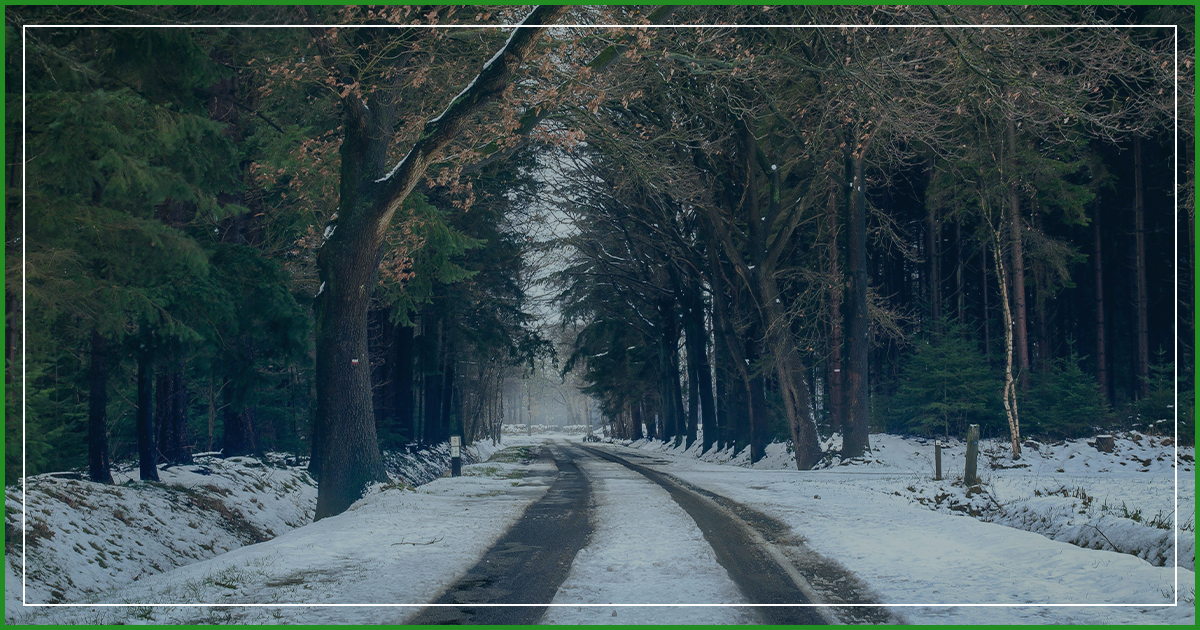The Safest Way To Drive on Snowy Roads
Montana’s picturesque landscapes, with its sprawling mountains and open roads, offer an idyllic setting for travelers. However, when winter descends upon the state, those same roads can transform into treacherous paths lined with snow and ice.
Navigating Montana’s snowy roads requires caution, preparation, and adherence to safety protocols to help avoid weather-related car accidents.
In this post, we’ll share the safest way to drive on snowy roads, ensuring a smooth and secure journey even in the most challenging conditions.
Winter Terrain
Winter weather, especially in Montana, can be unforgiving, with heavy snowfall and icy conditions prevalent across the state. Montana sees a mean of 48.30 inches of snowfall annually per the Northwestern Agricultural Research Center at Montana State University.
The mountainous terrain further complicates driving, as steep grades and winding roads become susceptible to snow accumulation and drifting. From the vast plains to the rugged mountain passes, every stretch of road demands careful attention and respect for nature’s forces.
Preparation Is Key
Before starting out on a journey in winter weather, it’s crucial to prepare both yourself and your vehicle.
Here are some key tips:
- Check Your Vehicle: Before winter arrives, ensure your vehicle is in optimal condition to tackle icy roads and cold temperatures. Schedule a maintenance check-up with a qualified mechanic to inspect crucial components such as the battery, brakes, tires, and heating system. Replace worn-out tires with snow tires or all-weather tires for improved traction on slippery surfaces. Additionally, top up essential fluids such as antifreeze, windshield washer fluid, and oil to maintain peak performance throughout the winter months.
- Create an Emergency Kit: Prepare for the unexpected by assembling a comprehensive emergency kit to keep in your vehicle. Include items such as blankets, extra clothing, non-perishable snacks, water, a flashlight with spare batteries, a first aid kit, a shovel, and a basic toolkit. Consider adding items specific to winter conditions, such as hand warmers, ice scrapers, snow brushes, and traction aids like sand or kitty litter. Having these supplies on look at some essential tips and techniques for driving can provide comfort and assistance in case of a breakdown or unexpected delay.
- Plan Your Route and Check the Weather: Stay ahead of winter weather by planning your route and checking the forecast before setting out. Choose main roads and highways over secondary routes, as they are more likely to be plowed and maintained during snowstorms. Take note of any potential hazards along your route, such as steep inclines, narrow bridges, or areas prone to drifting snow. Stay informed of weather updates throughout your journey, and be prepared to adjust your plans or postpone travel if conditions worsen.
- Practice Safe Driving Techniques: Winter driving requires a different set of skills and precautions compared to driving in clear conditions. Reduce your speed and increase your following distance to allow for greater reaction time on snow-covered roads. Brake gently and avoid sudden maneuvers to maintain control and stability, especially when navigating icy patches or snowdrifts. Use lower gears and gentle acceleration when starting from a stop to minimize wheel spin and improve traction. Keep a safe distance from snowplows and other vehicles to avoid collisions or visibility issues caused by blowing snow. The Montana Department of Transportation offers more winter driving on its website.
- Stay Informed and Flexible: Stay informed of road conditions and travel advisories by checking local news sources, transportation websites, or mobile apps before and during your journey. Be prepared to adjust your travel plans or delay your trip if conditions deteriorate or road closures are implemented. Tell friends, family, or coworkers about your travel plans and expected arrival time, and consider sharing your route with them for added safety. Flexibility and adaptability are essential when navigating winter weather, so remain vigilant and prepared to make informed decisions to ensure a safe and successful journey.
Driving Techniques for Snowy Conditions
Driving on snow-covered roads requires a different approach than normal conditions. Reduce your speed and increase following distances to allow for ample reaction time. Gentle maneuvers are key to maintaining control, so avoid sudden acceleration, braking, or sharp turns.
Use lower gears to minimize wheel spin and maximize traction, especially when climbing or descending steep grades. If your vehicle is equipped with antilock brakes (ABS), apply firm, steady pressure in case of a skid, allowing the system to modulate braking force for optimal control.
Navigating Hills and Descents
Montana’s terrain often includes challenging inclines and descents, which can be particularly daunting in snowy conditions. When ascending a hill, maintain steady momentum and try not to speed up, as spinning tires can lead to loss of traction.
If your vehicle does begin to lose traction, avoid sudden movements and gently steer in the direction you want to go, gradually reducing speed until traction is regained. When descending, engage lower gears to control speed and prevent the vehicle from picking up too much momentum.
Maintaining Visibility
Clear visibility is crucial for safe driving, especially in adverse weather conditions. Keep your windshield, windows, and mirrors free of snow and ice before setting out.
Use windshield wipers and defrosters to ensure maximum visibility while driving.
In heavy snowfall or low visibility conditions, activate your vehicle’s headlights and fog lights to make yourself more visible to other drivers. If visibility becomes severely impaired, consider pulling over to a safe location until conditions improve.
Emergency Situations
Despite precautions, emergencies can still happen on snowy roads.
If you find yourself stranded or in need of assistance, stay with your vehicle and use emergency supplies to stay warm and hydrated. Signal for help by activating hazard lights or tying a bright cloth to your antenna.
If conditions permit, venture outside only to clear snow away from the exhaust pipe to prevent carbon monoxide buildup inside the vehicle. Stay informed by monitoring your vehicle’s fuel levels and conserving energy to prolong battery life while awaiting rescue.
Respecting Road Closures and Advisories
Montana’s transportation authorities prioritize safety by issuing road closures and advisories during severe winter weather.
Respect these closures and avoid traveling on closed roads, as doing so not only endangers yourself but also puts emergency responders at risk. Stay updated on road conditions through official channels, such as state transportation websites or mobile apps, to plan alternative routes and avoid hazardous areas.
Driving on snowy roads demands a combination of preparation, patience, and skill.
By understanding the unique challenges posed by winter weather and adopting appropriate driving techniques, travelers can navigate safely through the state’s beautiful yet unforgiving landscape.
Remember to prioritize safety above all else, and always err on the side of caution when faced with uncertain conditions. With careful planning and respect for nature’s forces, every journey through Montana’s winter wonderland can be a memorable and secure experience.
Do you have questions about winter driving accidents in Montana, or do you need legal help for an accident that wasn’t your fault?
The expert lawyers at Western Justice Associates, PLLC, are here to help you find answers and the justice you deserve.
Your initial consultation is always free.









